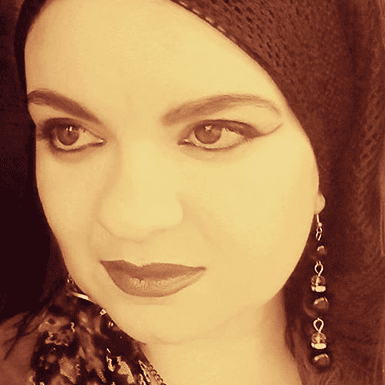Beyond the accessible narratives in the form of reports and news briefs which run the risk of normalising decades of colonial violence against Palestinians, art manages to impart the dimensions that can easily be lost or given less importance within mainstream media. Mohammad Sabaaneh’s book, “Palestine in Black and White” (Saqi Books, 2018), is an intense communication of Palestinian life; bludgeoned, displaced, yet still resisting.
As rightly described in the introduction to this book, Sabaaneh’s art depicts Palestine’s implosion. “When reality becomes bizarre,” writes Seth Tobocman, “social realism gives way to social surrealism.”
Navigating the confines of Palestinian implosion, Sabaaneh goes beyond the usual symbols associated with the Palestinian anti-colonial struggle. Indeed, at times it seems as if the symbols themselves are encouraging the reader to look beyond, to remove the symbolism from the object and return to understanding Palestine with an incisive awareness. There is no conformity to, or reliance upon, the acceptable discourse which provides the foundations for most forms of activism or support for Palestine, which at times reinforce the fragmentation of the cause, thus mirroring the political strategy even if unwittingly. Instead, Sabaaneh’s art depicts Palestine’s open wounds as a collective experience.
Growing up in Kuwait and returning permanently to Palestine before the Second Intifada, Sabaaneh says that his return “enabled me to further develop the image of the Palestinian hero who struggled against injustice, which found expression in my drawings time and again.”
Forming the image of Palestine is also a process of deconstruction. The artist’s experience of administrative detention and solitary confinement, which triggered the idea of the book format for this compilation of his sketches, expanded his understanding of the Palestinian prisoners’ experiences, their central role to the resistance, and glorification, which he describes as a process that both accentuates and misrepresents the reality. Sabaaneh makes a distinction between the prisoners’ sketches created prior to his imprisonment and those that were a direct reflection of his immediate environment. He explains the psychological dependence upon glorification; the metaphor of the “hero”, which forms a considerable part of artistic and intellectual expression and is also adopted by the prisoners themselves, not out of selfish motives, but “as a survival tactic to protect our souls from the dehumanising conditions in which we found ourselves and to safeguard our ability to resist.”Indeed, the experience of Palestinian prisoners, as Sabaaneh shows, should be framed within the Palestinian collective struggle. The book, which is divided into four main themes, emphasises how a single violation of human rights triggers multitudes of consequences for the indigenous population. As the reader leans into Sabaaneh’s perception and depictions, the concept of the collective becomes inescapable. One looks at the different ways in which Palestinians connect – the land, imprisonment, absence of freedom of movement, the loss of loved ones through Israeli aggression, settlement expansion, exploitation of labour – and realises the impact of such trauma in society. Sabaaneh portrays the reaction of an individual in relation to the consequences of violations, moving on to the impact of such violations upon the family, society and all Palestinians.
Read: 70 Years of Broken Promises: The Untold Story of the Partition Plan
One of the consequences portrayed strikingly by Sabaaneh is interruption, living in conditions where life exists without possibilities, in which even mundane tasks are carried out in incarcerated spaces. To accentuate this, one of the artist’s cartoons titled “Lives Interrupted” depicts Palestinians in stifling, enclosed spaces, where activities such as education, children playing, family duties, the maintaining of friendships, are all cloistered off in unproductive spaces. This concept is depicted in other cartoons which raise questions as to the normalisation of violations and their ramifications, as well as the desensitisation to such infringement. By creating such art, Sabaaneh has managed to bridge the gap between knowledge of how barriers operate, for example, and how the recurring denial of fundamental freedom decreases the expectations of life. The artist depicts Palestinians seeking a normal existence while having to contend with the fact that their disrupted lives have become normalised.
The family portrait, therefore, contains an empty space that is heightened by Sabaaneh’s depiction of a photo frame in place of the deceased or incarcerated person. The empty spaces left by Palestinian victims of colonial aggression are juxtaposed against the depiction of illegal Israeli settlement expansion and forced displacement in other cartoons. Sabaaneh also expands the concept of displacement to include “replacement” of the indigenous population by settlers, thus completing the portrayal of such violations. By drawing replacement alongside displacement, Sabaaneh is correcting an omission which largely goes unnoticed; that of discussing both violations as part of a sequence instead of isolated circumstances, which detracts from the subject of political violence.Focusing upon territory, Sabaaneh brings out the Palestinian attachment to the land. Hence, the uprooting of olive trees is not merely an act of vandalism destroying livelihoods, but it is also the uprooting of the indigenous in terms of historical memory, a reference that is also not as prominent as it should be in mainstream narratives about Palestine.
A striking aspect of the book is an acknowledgement of multitudes of narrations that have been lost, and others that might follow suit if Palestine is discussed within the dictated parameters. Sabaaneh’s art points out this peril. Accepted methods of dissemination of information are subject to limitation due to the influence of hegemony, political violence, statistics and restricted structuring. Art is not immune to such restrictions either. However, Sabaaneh’s return to the roots and his understanding of Palestine from within, have contributed to a depiction of Palestine’s cruel reality in which frustrations are tangible and loss is magnified, alongside the Palestinian will to resist and survive.



![PLO delegation - Cartoon [Sabaaneh/MiddleEastMonitor]](https://i0.wp.com/www.middleeastmonitor.com/wp-content/uploads/2017/11/22-11-2017.jpg?resize=500%2C312&ssl=1)
![Saudi attracts US attention by singing Israel's tunes - Cartoon [Sabaaneh/MiddleEastMonitor]](https://i0.wp.com/www.middleeastmonitor.com/wp-content/uploads/2017/11/9-11-2017-1.jpg?resize=500%2C310&ssl=1)






